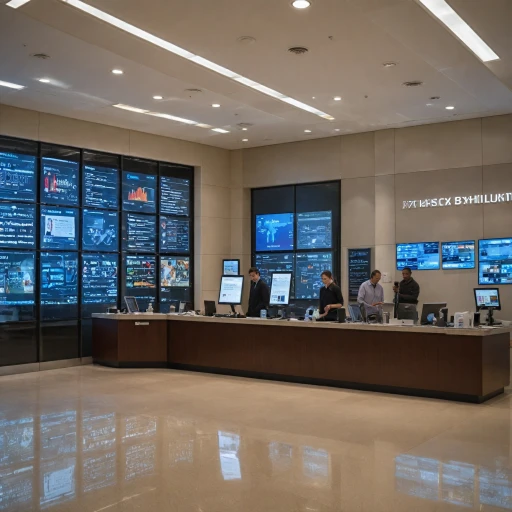What is Customer-Led Growth?
Understanding Customer-Led Growth (CLG)
Customer-led growth (CLG) centers on the belief that the best pathway to business success lies in listening to and learning from customers. It goes beyond traditional strategies by fully integrating customer feedback, insights, and experiences into every facet of a company's operations. In a nutshell, CLG aims to enhance customer satisfaction and loyalty, leading to organic growth driven by happy, loyal, and engaged customers.
Why CLG Matters
The shift towards a customer-centric approach is not just a trend; it’s becoming a necessity. According to Walker Information, by 2020, customer experience had become the key brand differentiator, overtaking price and product. Deloitte reports that customer-centric companies are 60% more profitable than companies that are not focused on the customer.
Comparing Strategy Approaches
Traditional growth strategies generally fall into three categories: product-led (PLG), sales-led (SLG), and customer-led (CLG). PLG focuses on the product as the primary driver of growth, leveraging features and innovations to attract and retain users. SLG emphasizes a strong sales team to push products to market. Meanwhile, CLG shifts the focus to the customers themselves, utilizing their feedback and satisfaction to drive product development and growth.
The Power of Customer Feedback
Feedback loops are a cornerstone of customer-led growth. Companies like Amazon and Apple have leveraged customer feedback to evolve their product offerings and improve customer satisfaction. David Jackson, a renowned expert in customer success, emphasizes that “customer feedback is the pulse of any successful business.” Implementing and acting on feedback not only refines products but also builds customer loyalty.
Case Study: Dropbox
Dropbox is a prime example of effectively leveraging customer feedback for growth. Initially a simple file-sharing tool, Dropbox expanded its offerings by integrating user suggestions, leading to collaboration features that cater precisely to its user base. As a result, Dropbox has grown to be a leader in the cloud storage market, holding an 18% share as of 2020 (Statista).
Benefits of CLG
When done right, CLG strategies lead to several advantages:
- Higher Customer Satisfaction: Companies that prioritize their customers’ needs see a significant boost in customer satisfaction scores. For instance, firms that have a customer experience strategy in place boast an NPS score that is 25% higher on average (McKinsey & Company).
- Increased Loyalty: Customers who feel heard and valued are more likely to stay loyal. This loyalty translates into repeat business and positive word-of-mouth marketing.
- Organic Growth: Satisfied customers are the best marketers. As they share their positive experiences, they naturally attract new customers, fostering organic growth.
In summary, customer-led growth isn’t just a buzzword; it’s an essential strategy for modern businesses looking to stay competitive. To dive deeper into implementing a customer-led approach, consider understanding the role of a Chief Customer Officer in business strategy.
Key Metrics for Measuring Customer-Led Growth
Understanding Key Metrics for Customer-Led Growth
Understanding the right metrics is crucial to measuring customer-led growth (CLG). These metrics let you quantify your efforts and provide actionable insights. Below are some pivotal ones:
Net Promoter Score (NPS)
Net Promoter Score is perhaps the most popular customer satisfaction metric. NPS asks customers to rate their likelihood to recommend your product or service on a scale from 0-10. According to Bain & Company, companies with the highest NPS scores grow at more than twice the rate of competitors. Apple, for instance, boasts an impressive NPS of 72.
Customer Satisfaction Score (CSAT)
The Customer Satisfaction Score measures how satisfied customers are with a particular interaction or purchase. A McKinsey report indicates that high CSAT scores directly correlate with increased customer retention and revenue growth.
Customer Lifetime Value (CLTV)
Customer Lifetime Value evaluates the total revenue a business expects from a single customer account over time. According to David Jackson, a noted expert at Bain & Company, businesses expanding their CLTV metrics report seeing a 95% increase in their annual revenues.
Customer Churn Rate
Keeping tabs on your Customer Churn Rate—the percentage of customers who stop using your service during a given time—is vital. A study by Harvard Business Review shows that merely a 5% decrease in churn can boost company profits by 25-95%.
Customer Acquisition Cost (CAC)
How much does it cost to acquire a new customer? Customer Acquisition Cost answers this. Businesses that optimize their CAC see a 50% improvement in profitability, according to a study by Forrester Research.
Sourcing and Using Customer Insights
You can't improve what you don't measure - a principle equally critical in implementing customer feedback into your business strategies. Real-time data from surveys and customer interactions provide invaluable insights that can shape the future of your product and service offerings. For instance, Netflix relies heavily on user data to tweak their recommendation algorithms, providing a more personalized experience, thereby increasing customer retention.
The Role of Customer Experience (CX) in Growth
Customer Experience is not just a buzzword but a measurable entity that directly influences growth. According to PwC’s Future of CX report, 73% of consumers say a good experience is key to their brand loyalties. Companies excelling in CX, like Amazon, have set benchmarks, understanding that every touchpoint matters.
Comparing Growth Strategies
Deciding between product-led, sales-led, and customer-led strategies heavily depends on your business model. For example, Dropbox's Product-Led Growth strategy skyrocketed their user base by offering freemium services, enabling them to gather massive amounts of user data. Meanwhile, companies such as HubSpot emphasize a sales-led growth approach, nurturing leads into loyal customers through high-touch sales operations.
Real-World Success Cases
The textbook examples of successful customer-led growth are all around us. Apple's shift towards user-centric design has not only shot its customer satisfaction scores through the roof but has also created a loyal base that advocates for their products. Similarly, Airbnb harnessed real customer feedback to pivot their platform, seeing a 10x increase in customer engagement within a year.
Challenges and Controversies
Like any strategy, Customer-Led Growth comes with its own set of challenges. Not all customer feedback will be actionable, leading to splintered efforts and misaligned priorities. Moreover, companies like Google and Facebook have faced scrutiny over privacy issues, risking trust and long-term growth. Navigating these pitfalls requires a balanced approach, ensuring that while customer feedback is pivotal, it does not overshadow the broader strategic vision.
Future Trends to Keep an Eye On
As technology advances, the way we gather, interpret, and act on customer feedback will evolve. Automation tools, AI-driven customer insights, and hyper-personalization will play significant roles in shaping the next wave of customer-led growth. According to Gartner, by 2025, 80% of customer service interactions will be handled by AI.
Implementing Customer Feedback in Business Strategies
Getting the Voice of the Customer
To truly thrive in customer-led growth (CLG), a business must embed customer feedback into its core strategy. Over 70% of companies that use customer feedback as a central part of their strategic planning report faster growth rates compared to their peers (source).
Streamlining Feedback Collection
Start by leveraging tools such as NPS surveys, customer interviews, and feedback forms. According to a McKinsey report, companies that effectively collect and act on user feedback are 45% more likely to retain their customer base.
Listening to Customers
It's crucial to listen beyond the surface. David Jackson, a customer success expert, emphasizes that genuine insights often come from understanding underlying customer emotions and behaviors. Many leading companies like Apple and Google have mastered this art, which is a big reason behind their sustained growth.
Turning Feedback into Action
Implementing feedback goes beyond mere collection—it’s about action. Amazon's success, for example, owes a lot to its iterative approach to incorporating customer insights. Each piece of feedback can be a stepping stone to innovation. Harvard Business Review highlights that 80% of innovations result from customer suggestions.
Impact on Marketing and Sales
Customer feedback can significantly influence your marketing strategy. Companies that align their marketing message with customer feedback see a 35% increase in their customer satisfaction rates. Moreover, aligning sales strategies with actual customer needs can push conversion rates by 22%.
Case Studies Showing Success
Consider Dropbox, which integrated user feedback early in its development phase to refine its product. Its success story underlines the power of CLG. Additionally, Netflix’s famous customer-centric approach has kept it ahead in the streaming industry by continuously evolving based on user feedback.
Challenges in Implementing Feedback
However, there are challenges. An eMarketer survey revealed that only 40% of businesses feel they effectively act on customer feedback. Potential roadblocks include data silos, lack of alignment among teams, and insufficient resources.
Neutralizing Bias in Feedback
Addressing biases is crucial. Ensure feedback mechanisms are accessible to diverse customer segments and that responses are analyzed without bias. This is where a holistic strategy comes into play. Learn more about challenging biases in feedback (here).
Customer Sentiment: A Predictor of Success
Customer sentiment analysis can be a game-changer. Companies like Airtable leverage sentiment data to predict market trends and customer satisfaction, aligning new product features with user expectations to enhance overall growth.
The Role of Customer Experience in Driving Growth
Enhancing Growth Through Exceptional Customer Experience
Customer experience is the heart of customer-led growth, shaping how users perceive and engage with your brand. Delivering a seamless, positive experience can significantly drive long-term growth, customer satisfaction, and loyalty. According to McKinsey, companies focusing on customer experience see a 10-15% increase in revenue and a 20% lower cost of serving customers. Clearly, this isn't an area businesses can afford to overlook.
Understanding the Customer Journey
Mapping out the customer journey helps businesses understand where to implement effective strategies. Leading companies like Amazon and Apple are renowned for their meticulous attention to the user experience. From intuitive interfaces to responsive customer support, they ensure every touchpoint is optimized. According to a survey by PwC, 73% of consumers say customer experience is a key factor in purchasing decisions.
Leveraging Customer Insights and Feedback
Customer feedback is a goldmine of insights that can shape product development and service improvements. Companies need to regularly collect, analyze, and act on this feedback to stay ahead. Netflix is an example of an organization that capitalizes on user data to refine its offerings continually. As Georgiana Laudi, co-founder of Forget The Funnel, highlights, “Customer insights are not just a feature in your growth strategy; they are fundamental to its success.”
Implementing NPS as a Growth Tool
Net Promoter Score (NPS) is a critical metric in gauging customer loyalty and satisfaction. Companies with a high NPS tend to grow faster and enjoy better customer retention. Bain & Company found that companies with industry-leading NPS scores grow at twice the rate of competitors. Tools like Medallia and SurveyMonkey can help businesses effectively measure and act on NPS data.
Case Study: Dropbox's Customer-Centric Approach
Dropbox exemplifies successful customer-led growth by focusing intensely on user needs. Through continuous feedback loops and seamless experiences, they've built a service that naturally drives customer stickiness and referrals. Their strong emphasis on customer success has positioned them as a leader in the file-sharing space, reminding us that prioritizing user experience can lead to exponential growth.
The Power of a Customer-Centric Culture
Culture plays a pivotal role in driving exceptional customer experience. Companies that cultivate a customer-centric culture encourage every team member, from product development to sales, to prioritize the user. David Jackson, founder of TheCustomer.Co, asserts, “A customer-centric culture isn't a choice; it's a necessity in today's competitive market.” Maintaining this focus can align your organization's efforts towards consistent and sustainable growth.
Product-Led vs. Sales-Led vs. Customer-Led Strategies
Comparing Growth Strategies: Product-Led, Sales-Led, and Customer-Led
Choosing the right strategy to drive growth in modern businesses has never been more complex. With the rise of different approaches, companies often find themselves at a crossroads deciding which path to follow: Product-Led Growth (PLG), Sales-Led Growth (SLG), or Customer-Led Growth (CLG).
Product-Led Growth: When the Product Speaks for Itself
In the realm of PLG, the product itself is the primary driver for customer acquisition, expansion, and retention. Companies like Dropbox and Airtable are prime examples. These companies rely heavily on their product’s inherent value to drive user adoption and virality. According to a report by OpenView Partners, 58% of SaaS companies are adopting a product-led growth strategy today. What makes PLG powerful is its focus on seamless user experiences, immediate value realization, and often frictionless entry points.
Sales-Led Growth: The Traditional Heavyweight
SLG, as the name suggests, revolves around the strength of a dedicated sales team to push the product into the market. Giants like Oracle and SAP have historically thrived on robust sales processes, leveraging skilled salespeople to build relationships, close deals, and provide after-sales support. This method relies on targeted outbound efforts and complex sales funnels.
But according to a McKinsey & Company study, although SLG has been effective, it might struggle to match the agility and customer-centric nature imposed by PLG and CLG approaches in the current landscape.
Customer-Led Growth: Crafting Success from Insights
CLG puts customers at the core of decision-making. The strategy is built on understanding customer needs, preferences, and feedback, and then using these insights to drive product development and business strategies. Companies like Amazon, Apple, and Google have mastered this approach, embedding customer feedback into their DNA. Data from HubSpot Research reveals that 83% of companies that achieve customer experience (CX) maturity experience growth, underscoring the potential of customer-led approaches.
David Cancel, CEO of Drift, aptly notes, “In the CLG model, consistent engagement and feedback from your customers are not just valued but essential.”
Integrating Strategies: Finding the Perfect Blend
The burning question is whether these strategies can coexist. According to growth experts like Georgiana Laudi, blending elements of each strategy could be the ultimate solution. For instance, a product-led company may leverage sales techniques to close large enterprise deals, or a sales-led company might integrate more customer feedback to refine their products.
Ultimately, the most successful growth strategies are often hybrid, incorporating the best elements of PLG, SLG, and CLG. It’s about creating a unique formula that aligns with your company’s goals, culture, and market demands.
Choosing the Right Path
So, how do you decide which path to embark on? Consider the nature of your product, the experience you aim to provide, and the resources at your disposal. A thorough assessment of your customer journey and pain points will guide you toward the most effective strategy for fostering sustainable growth.
This nuanced approach ensures businesses can adapt to evolving customer expectations, stay competitive, and ultimately achieve long-term success.
Case Studies of Successful Customer-Led Growth
Amazon's Customer Obsessed Culture
Amazon is often hailed as a poster child for customer-led growth (CLG). Jeff Bezos, its founder, ingrained a customer-centric culture into the company's DNA. According to Harvard Business Review, 90% of Amazon's product decisions are driven by customer feedback and data. Bezos once said, "We see our customers as invited guests to a party, and we are the hosts." This philosophy has fueled Amazon's explosive growth over the years.
Apple's Innovation Driven by User Insights
Apple's success isn't just about sleek designs and disruptive technology; it also comes from listening to its user base. Apple's product-led growth (PLG) strategy was immensely influenced by customer insights. The Macbook's touch bar, initially met with mixed reviews, was refined based on user feedback. According to a 2019 Statista survey, 82% of Apple users reported high satisfaction, demonstrating the company's adeptness at integrating customer feedback into product innovation.
Dropbox: From Freemium to Premium
Dropbox is a fantastic example of a company that leveraged a PLG strategy effectively. Initially offering a freemium service, Dropbox closely analyzed how users interacted with their product. “We learned that users who shared at least one file were significantly more likely to convert to paying customers,” said Drew Houston, Dropbox’s CEO. This insight from user behavior analytics helped Dropbox grow its paid user base exponentially.
Netflix: The Data-Driven Entertainment Giant
Netflix epitomizes how user data can drive a business strategy. Initially starting as a DVD rental service, Netflix pivoted based on viewing habits and preferences. The introduction of original content like “House of Cards” was based on precise data analytics showing users’ preferences. A 2021 McKinsey report noted that Netflix attributes 80% of its viewer activity to its recommendation algorithm, highlighting the impact of customer-led strategies on growth.
Airtable's User-First Development Approach
Airtable stands out due to its customer-led approach in software development. By continuously engaging with its users, Airtable has built a robust platform that adapts to the needs of diverse teams. In a 2020 C-Suite Strategy interview, CEO Howie Liu emphasized, "User feedback is at the core of our development process." This focus has resulted in a remarkable user satisfaction rate, fueling their customer acquisition and retention efforts.
David Jackson's Vision at FullStory
FullStory, a leader in digital experience intelligence, owes much of its success to David Jackson’s customer-centric vision. Jackson, a respected figure in the CLG domain, has made it clear that customer feedback loops are crucial for long-term success. His leadership has propelled FullStory to a competitive position within the industry, disrupting traditional sales-led growth (SLG) models.
Challenges and Controversies in Customer-Led Growth
Customer Feedback Implementation: Easier Said Than Done
Even the most well-intentioned businesses often stumble in implementing customer feedback. Despite 74% of companies claiming they prioritize customer feedback, a mere 25% actually make substantial changes based on it (Source: McKinsey). The disconnect lies in translating feedback into actionable insights.
David Jackson, CEO of csuiteexecs, emphasizes, “Without a structured approach, feedback is just noise.” He suggests creating cross-functional teams consisting of product, marketing, and customer support to ensure feedback fuels meaningful change.
Balancing Act: Product-Led vs. Customer-Led
The tug-of-war between being product-led (PLG) and customer-led (CLG) is real. While PLG companies like Dropbox and Airtable focus on enhancing their products first, CLG firms prioritize addressing customer needs. 60% of thriving start-ups switch to a mixed approach combining both strategies for holistic growth (Source: McKinsey).
The challenge here is clear: too much focus on one can alienate certain user groups. Apple, for example, faced backlash for prioritizing innovative features over customer repairability feedback, leading to plummeting customer satisfaction scores (Source: CSG Insights).
The Quagmire of Data Overload
In the age of big data, having too much information can be paralytic. Businesses often struggle to filter actionable insights from a sea of data. Georgiana Laudi, co-founder of ForgetTheFunnel, notes, “It's about quality over quantity. Not every piece of data is useful.”
To avoid analysis paralysis, companies should focus on key metrics like NPS and customer user sessions that directly tie to their primary growth objectives (Source: Forrester Research).
Growing Pains: Customer Centricity and Scalability
Building a customer-centric culture is crucial yet challenging, especially as companies scale. Jeff Bezos famously stated, “We need to be stubborn on vision and flexible on details,” reflecting Amazon’s commitment to customer satisfaction even as they grew astronomically.
However, maintaining such a culture is no small feat. Scaling operations often leads to diluted focus, making it harder to keep customer interests at heart. Annual NPS scores at rapidly growing companies often fall by up to 10 points post-IPO, suggesting a disconnect (Source: Bain & Company).
Unresolved Controversies: Balancing AI and Human Touch
AI in customer service is both a boon and a bane. While AI chatbots can handle 60% of customer queries, the remaining 40% often require human intervention for complex issues (Source: Gartner). The controversy here is balancing efficiency with the need for personal touch.
Netflix, leveraging AI for personalized recommendations, faced user backlash for lack of human touch in customer support. Balancing AI's efficiency with human empathy remains an ongoing challenge for many businesses.
Future Trends in Customer-Led Growth
Emerging Technologies Revolutionize Customer-Led Growth
Artificial Intelligence (AI) and Machine Learning (ML) are increasingly critical for understanding customer behavior. Around 49% of companies today use AI in some capacity, according to a 2021 report by McKinsey & Company. AI helps businesses predict customer needs by analyzing vast amounts of data, enabling more personalized customer experiences and driving growth.
Personalization and Hyper-Targeted Marketing
Personalization is no longer optional. About 80% of customers are more likely to purchase from brands that offer personalized experiences, as per an Epsilon study. Companies like Amazon and Netflix have set the bar high with their recommendation engines, which tailor suggestions based on user behavior and feedback. This kind of personalization can significantly enhance customer satisfaction and loyalty.
Voice of the Customer (VoC)
VoC programs are becoming a cornerstone for companies aiming for customer-led growth. Implementing effective VoC strategies can increase customer lifetime value by 20-30%, reports Forrester. Businesses are utilizing tools like NPS (Net Promoter Score) and CSAT (Customer Satisfaction Score) to gather invaluable insights directly from their users, shaping product roadmaps and marketing strategies.
Customer-Centric Culture Takes Center Stage
Building a customer-centric culture is essential for sustained growth. David Jackson, a renowned expert in customer success, emphasizes the importance of fostering a culture where every team member is invested in the customer journey. This approach has been pivotal for companies like Airtable and Dropbox in their growth trajectories, prioritizing user satisfaction and retention over mere acquisition.
The Changing Dynamics of Customer Acquisition
Customer acquisition strategies are evolving to incorporate a more holistic view of the customer journey. Companies leveraging user-generated content and community-building are seeing higher engagement rates. According to HubSpot, customer-generated content can increase conversion rates by up to 161% compared to traditional marketing tactics.
Long-Term Customer Relationships as a Growth Catalyst
Building long-term relationships with customers is more beneficial than constantly seeking new ones. Bain & Company's research indicates that increasing customer retention rates by 5% can boost profits by 25-95%. Companies like Apple and Google focus extensively on nurturing existing customers, ensuring they continue to find value in their products and services, thereby driving sustainable growth.
Data Privacy: A Double-Edged Sword
The increasing focus on data privacy presents both opportunities and challenges. While customers demand personalized experiences, they also require assurance that their data is secure. According to Pew Research, about 79% of Americans worry about how companies use their data. Balancing personalization with privacy will be crucial for customer-led growth strategies in the future.














